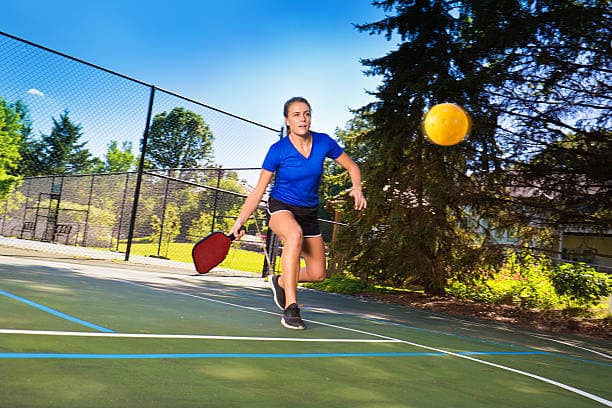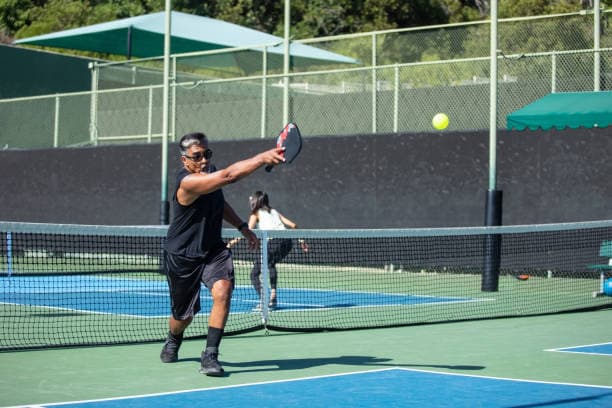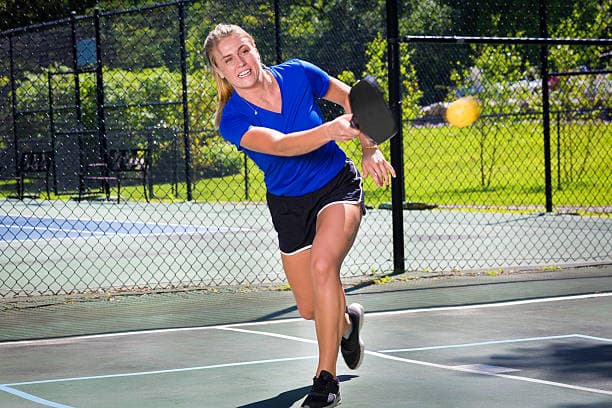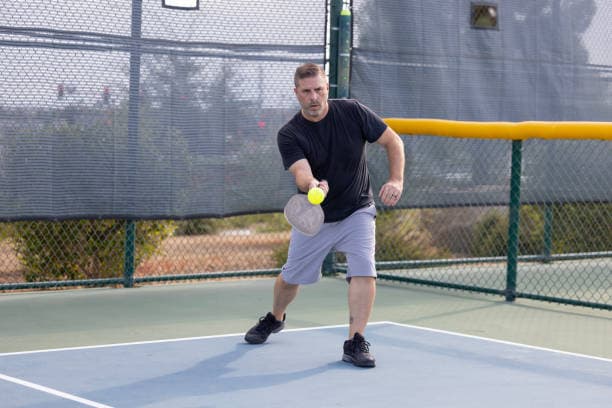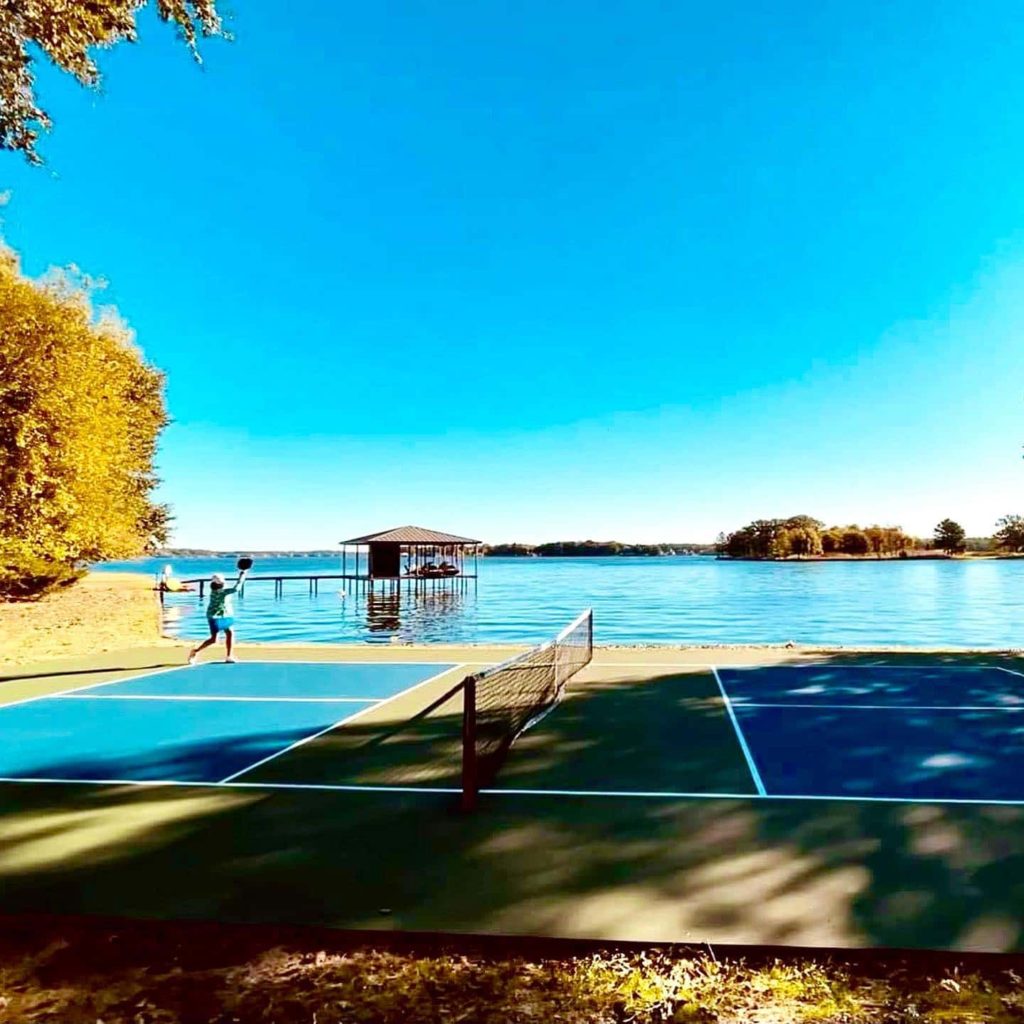The Forehand Drive
One crucial pickleball shot that can significantly elevate your offensive game is the forehand power drive. This powerful stroke allows players to hit the ball with great force and accuracy, making it a formidable weapon against opponents.
In this article, we will explore three effective ways to improve your pickleball forehand power drive. By mastering these techniques and incorporating them into your gameplay you can take your offensive skills to new heights.
What is the Pickleball Forehand Drive?
The forehand power drive is a key component of any successful pickleball player’s arsenal. It involves striking the ball aggressively with maximum force while maintaining control and accuracy.
The primary objective of this shot is to generate substantial pace on the ball to make it difficult for opponents to return effectively. To accomplish this players rely on a combination of proper grip technique, body positioning, timing, and follow-through mechanics.
The Importance of Improving Your Power Drive
Improving your pickleball forehand power drive can have a profound impact on your offensive capabilities during matches. A strong power drive allows you to dictate the pace of play by putting pressure on your opponents with deep shots that land close to or even beyond the baseline. This not only keeps them on their toes but also creates opportunities for you to dominate rallies from advantageous positions on the court.
An improved power drive grants you more options during gameplay as it becomes easier to hit winners or force weak returns from opponents who struggle with powerful shots directed at them. With an enhanced ability to generate speed and control through your forehand power drive, you can confidently approach each point with a strategic mindset, knowing that you possess a formidable offensive weapon capable of turning tides in your favor.
Understanding the Mechanics
The forehand power drive in pickleball requires a solid understanding of the fundamental mechanics. By breaking down the technique into its key components you can develop a strong foundation for a powerful shot. This section will delve into each aspect of the forehand power drive, from grip to follow-through.
Grip: Continental Grip for Better Control & Power
The grip is an essential element in executing a successful forehand power drive. Opting for a continental grip provides optimal control and power. To achieve this grip place your hand on the paddle handle as if you were shaking hands with it.
The “V” formed by your thumb and index finger should align with the top bevel of the racket handle. This grip allows for flexibility in adjusting shot angles while maintaining stability and generating substantial power.
Stance: Staying Balanced in the Athletic Position
A balanced and athletic stance is crucial in generating power for your forehand drive. Stand with your feet shoulder-width apart, toes pointing slightly forward, knees slightly bent, and weight evenly distributed on both feet.
This positioning ensures stability while allowing you to transfer energy efficiently through your legs and core into your shot. Keep your body relaxed but engaged, ready to explode into action when striking the ball.
Backswing: Proper Preparation
The backswing sets the stage for a powerful forehand drive by creating momentum that translates into racket head speed at contact point. Start by turning your shoulders sideways as you prepare to hit the ball.
Simultaneously, drop the racket head below the level of your wrist while keeping it parallel to the ground. This position helps build potential energy that will be unleashed during impact, leading to maximum acceleration.
Contact Point: Hitting the Ball at Waist Level
The contact point is where your paddle meets the ball and greatly influences the trajectory and power of your forehand drive. Aim to make contact with the ball at waist level, slightly in front of your front foot. This positioning allows for better control and timing. Additionally, maintain a slightly closed racket face during impact by angling it slightly towards the ground. This closed face position helps generate topspin while enhancing control and power in your shot.
Follow Through: Finishing the Stroke
The follow-through is not just a mere afterthought but an integral part of unleashing maximum power on your forehand drive. After making contact with the ball, extend your arm fully towards the target while maintaining a relaxed grip on the racket handle.
Simultaneously snap your wrist forward as if flicking water off your fingers. This action adds extra speed to the shot and helps maintain control over its direction. The paddle should end over your non-dominant shoulder.
Physical Conditioning
Leg Strength
When it comes to improving the power of your forehand power drive in pickleball, having a strong and explosive lower body is crucial. Incorporating exercises that target your leg muscles can significantly enhance your ability to generate force from the ground up.
Squats are effective in strengthening your quadriceps, hamstrings, and glutes. By performing squats with proper form and gradually increasing the weight over time you can develop the necessary leg strength to generate a powerful drive. If you’re just starting out, squat by using your body weight and do 3 sets of 8 reps.
Lunges are also beneficial as they engage multiple muscle groups simultaneously while replicating the dynamic movements required on the pickleball court. Additionally, incorporating plyometric exercises like box jumps or squat jumps into your training routine will help improve your explosive power by training your muscles to rapidly contract and generate force.
Core Stability
The core plays an integral role in generating power and stability during a forehand power drive in pickleball. Strengthening your core will not only allow you to transfer energy efficiently but also help maintain balance throughout the shot.
Planks are an excellent exercise for building core stability since they engage multiple muscle groups simultaneously including the abs and back muscles. By holding a plank position for progressively longer durations or introducing variations like side planks or weighted planks using a stability ball or resistance bands, you can challenge and strengthen your core further.
Russian twists are another effective exercise that targets obliques—the rotational muscles responsible for generating power during a forehand drive—by twisting side-to-side while holding a weight or medicine ball. Incorporating medicine ball exercises such as overhead slams or rotational throws into your training routine will both strengthen your core and enhance rotational power, allowing for a more forceful forehand drive.
Arm Strength
To maximize the power and control of your pickleball forehand power drive it’s crucial to develop strength in your arm muscles. Targeting the forearm, biceps, and triceps will not only help you generate racket head speed but also improve your ability to stabilize the racket through contact.
Resistance band exercises are highly effective in targeting these specific muscle groups while allowing for a greater range of motion. By performing wrist curls, hammer curls, and tricep extensions with resistance bands, you can increase both strength and flexibility in your arms.
Incorporating weightlifting routines that focus on forearm exercises such as wrist pronation/supination or grip strengthening exercises like farmer’s walks can further enhance arm strength and stability. Remember to gradually increase the weight used during these exercises over time to continually challenge your muscles and promote growth.
Technique Refinement
Paddle Head Speed
Improving paddle head speed is paramount when striving for a powerful pickleball forehand drive. One beneficial drill involves shadow swings where you practice swinging without hitting an actual ball. By focusing on accelerating the paddle head through the contact point while maintaining proper technique you can train yourself to generate more paddle speed during an actual shot.
Additionally, utilizing resistance bands attached to a stationary object and performing simulated forehand drives against its resistance can also help develop explosive acceleration of the paddle head. Gradually incorporating this drill into your regular training routine will allow you to refine your technique while increasing both power and control.
Footwork
Having quick footwork and being able to get into the proper position on time is crucial in executing a forehand power drive. Incorporating ladder drills such as the two feet in, two feet out drill or side shuffle drill, can significantly enhance your agility and foot speed.
These drills focus on improving your reaction time, coordination, and balance—all essential elements for getting into an optimal hitting position efficiently. Also incorporating agility exercises like cone drills or ladder hopscotch can further challenge your footwork capabilities while simulating the dynamic movements required during a fast-paced pickleball match.
Visualization
Mastering the mental aspect of pickleball is just as important as honing physical skills. By incorporating visualization techniques into your training routine you can improve your ability to execute a strong forehand power drive consistently. Prior to each shot, take a moment to visualize yourself performing a powerful and precise forehand drive with perfect technique and form.
Imagine the feeling of connecting with the ball at its sweet spot and experiencing the sensation of power coursing through your body as you effortlessly hit winners. This mental imagery exercise not only enhances focus but also helps establish neural pathways that facilitate muscle memory when it comes time to execute the shot on the court.
Remember that visualization is not limited to practice alone; incorporate this technique during game situations too for better performance under pressure.
Refining your technique through drills focusing on racket head speed, improving footwork with ladder drills or agility exercises, and utilizing visualization techniques all contribute towards maximizing your potential for a stronger pickleball forehand power drive. By incorporating these aspects into your training routine regularly and consistently striving for improvement both physically and mentally, you will undoubtedly elevate your game on the pickleball court.
Conclusion
Improving your pickleball forehand power drive requires a combination of understanding the mechanics, physical conditioning, technique refinement, and utilizing specialized training tools or equipment. By implementing the tips outlined in this article you can significantly enhance the power and consistency behind your forehand drives.
With regular practice and dedication to improving these aspects of your game, you’ll find yourself enjoying more powerful shots that keep opponents on their toes while giving you an upper hand on the court. So go ahead, embrace these techniques with confidence and watch as your pickleball game reaches new heights!

